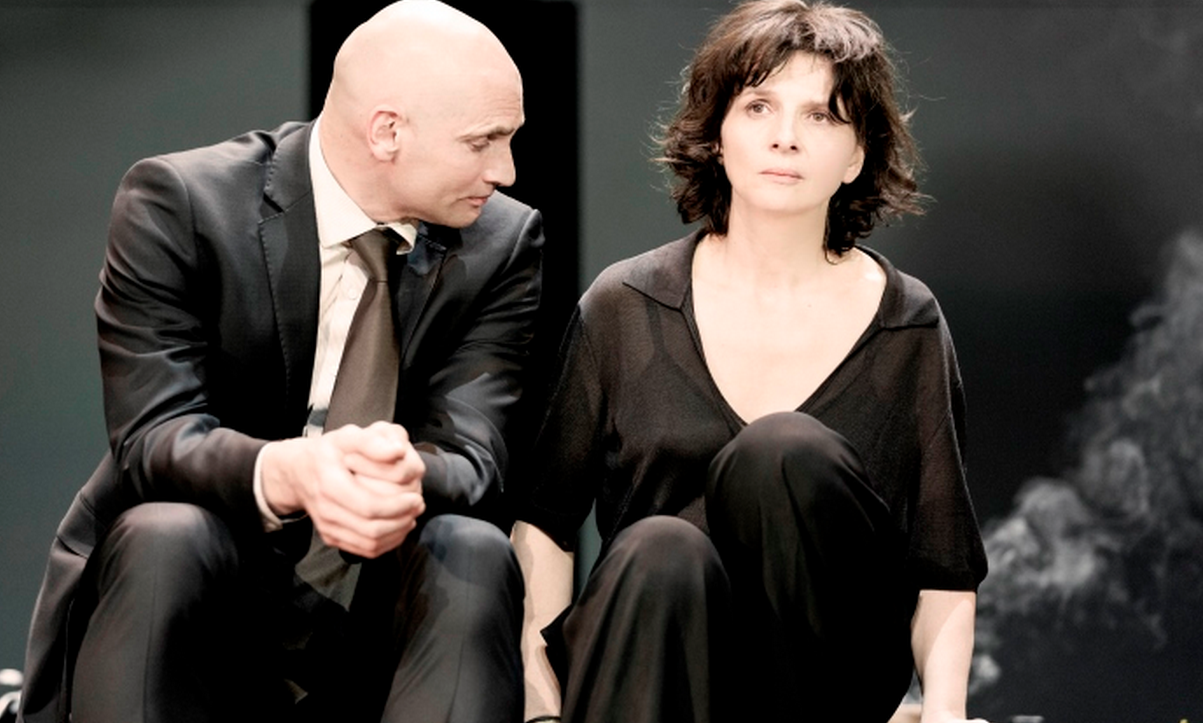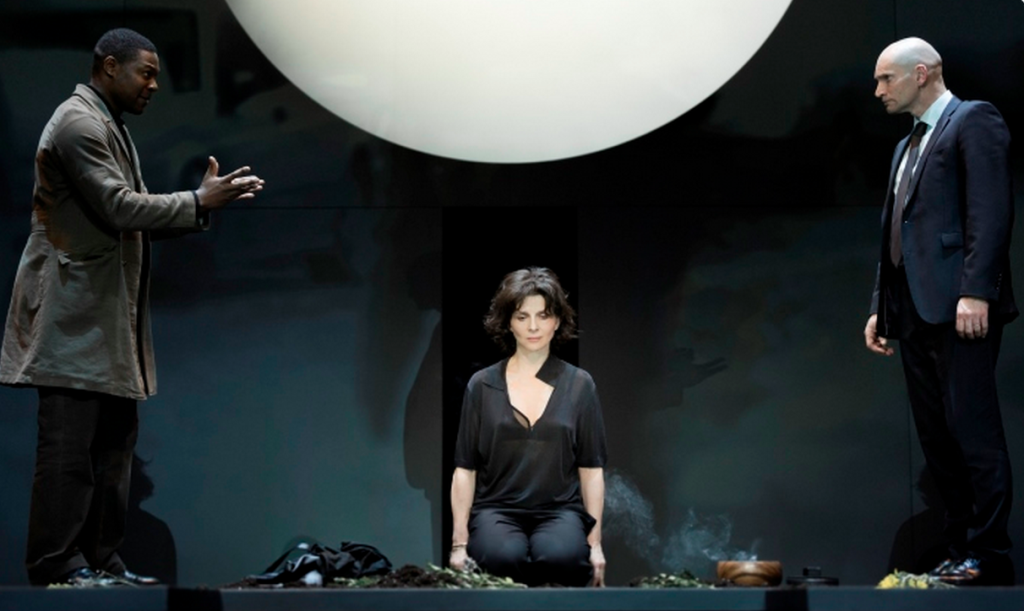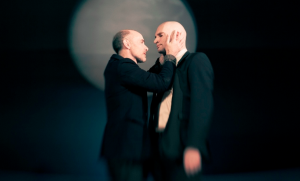SOPHIE COMPTON reviews ‘Antigone’ showing at the Barbican Centre.
A trip to the Barbican cannot be other than an event, a spectacle – I always feel a frisson of excitement upon entering its labyrinthine, monumental buildings. Knowing that this trip was to see ‘Antigone’, with the title character played by Juliette Binoche, only amplified this excitement.
The show’s first few moments were visually magnificent – a white sphere attached to the ceiling was drawn slowly to the left, revealing a huge orb of light behind. At first only a sliver was visible, like the first day of a crescent moon, but gradually as the sphere (or wheel of fortune) was pulled back a half-moon emerged and blended into a glowing sun, casting light over the wide stage. These intelligent, aesthetically captivating design elements were delivered scene after scene. Nobody could attack this ‘Antigone’ for being unstylish.
Similarly, Ivo van Hove’s direction was tantalisingly restrained: the blocking was taut and the events of the story unravelled relentlessly over an hour and 40 minutes without an interval. His most extreme move was to democratise the chorus, which can become a dull and badly thought out attempt at experimentation in Greek Tragedy. In this case every actor, apart from Patrick O’Kane’s Kreon, doubled up as a chorus member, fluidly slipping into and out of their respective roles. This made use of the Chorus’ role as spectator and commentator: nobody was ever on stage alone; every line was delivered under scrutiny from other cast members, who also doubled as their closest family.
It was poised, polished and provocative – but, perhaps because of these qualities, something didn’t quite hit true. ‘Antigone’ possesses a raw emotional charge, which was somehow dampened in this production. This was also due to the misplaced focus on ‘relevance’ – projected images of blurred men and women walking past cars were haunting, but reminiscent of a BBC documentary – you almost expected Simon Sharma to appear in the background.
Scriptural slips into self-consciously contemporary slang, such as Creon saying ‘you what’, felt forced. These were the only awkward moments in Ann Carson’s thought-provoking and refreshingly irreverent new translation. I’m surprised the need was felt to justify the modern setting – surely those who have elected to go and watch a Greek Tragedy have already acknowledged that the 2000-year age gap does not mean striking truths cannot be transferred both backwards and forwards?
In fact, the major disappointment came from its star: Juliette Binoche, who has mesmerised and tantalised audiences in films such as ‘Chocolat’ and ‘The English Patient’. Perhaps my expectations were too high, and anything in reality was bound to fail, or perhaps her otherworldly face, so unforgettable on camera, is less well suited to the demands of stage acting. Her Antigone didn’t capture the imagination in the same way her film work does.
Binoche did not communicate the unwavering conviction and desperate bravery that would be necessary to act on your beliefs to your death, against appeals from your orphaned sister. Her performance verged on erratic, she seemed desperate to the point of deranged from the very first scene. Melodrama has no place in a depiction of Antigone – her pride and recklessness must be tempered with a deep foundation in her beliefs for the tragedy to succeed, and be believed.
There was much to be admired about this production; in particular it’s striking visual elements. But ultimately it left you feeling slightly cold. I want to blame this on my own too-high presuppositions – however a production of such a high calibre (presumably with a corresponding big budget) should be should be able to shoulder those expectations, and deliver.
‘Antigone’ is showing at the Barbican Centre until 28 March. For tickets and more information please click here: https://www.barbican.org.uk/eticketing/performancelist.asp?shoid=37634
Images credited to Jan Versweyveld.







